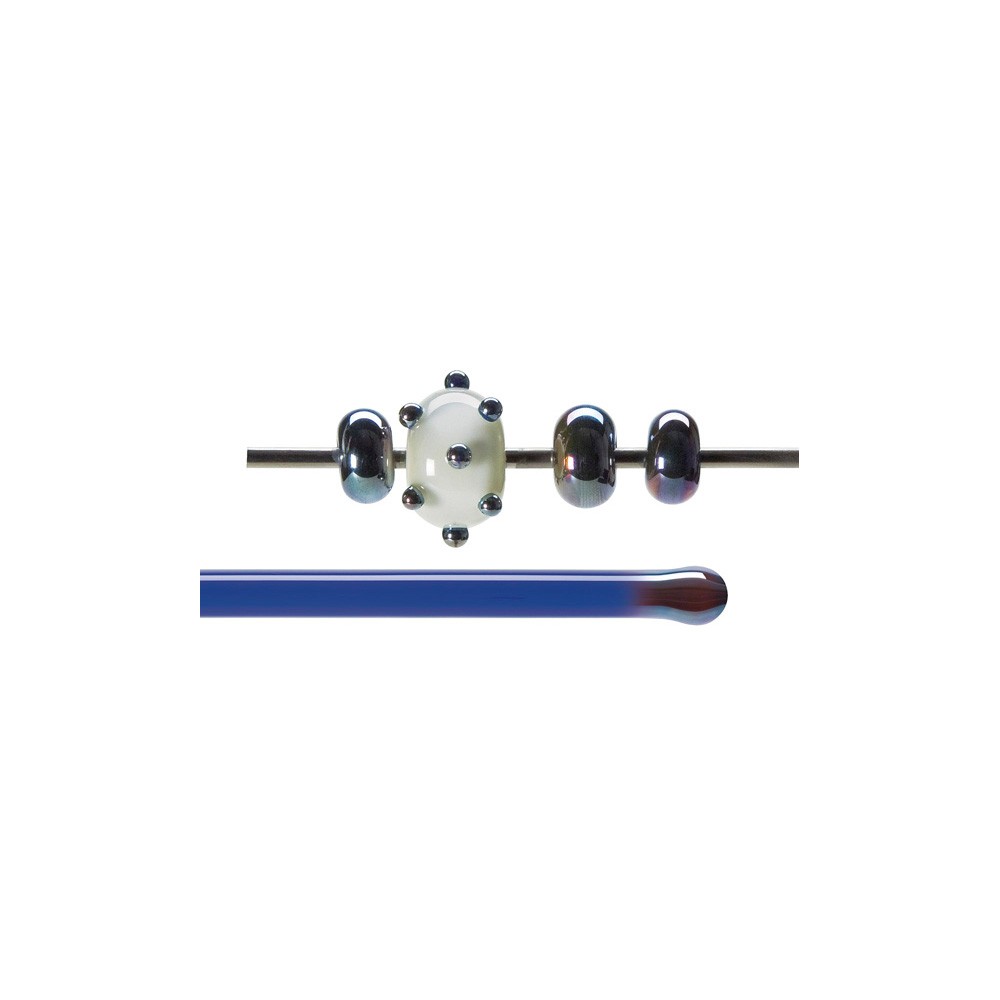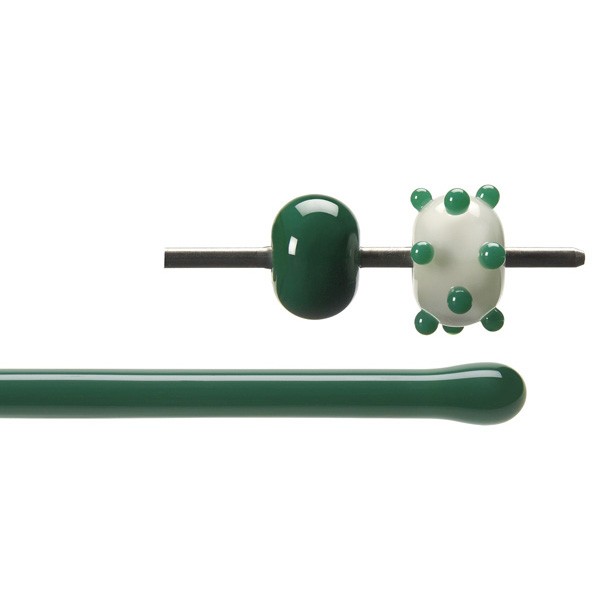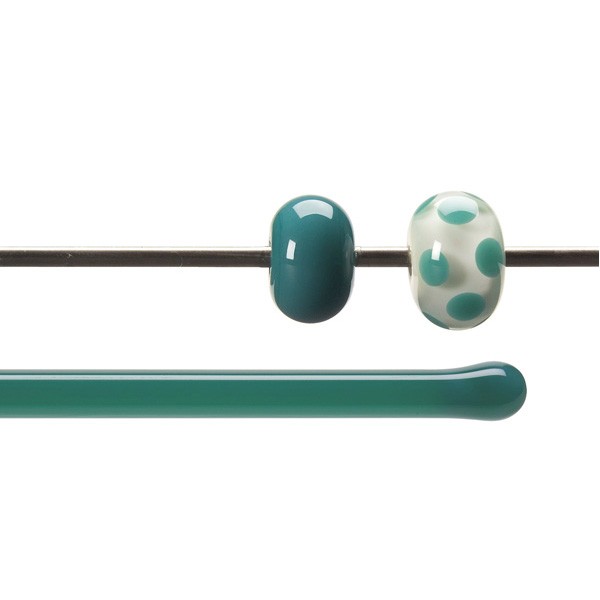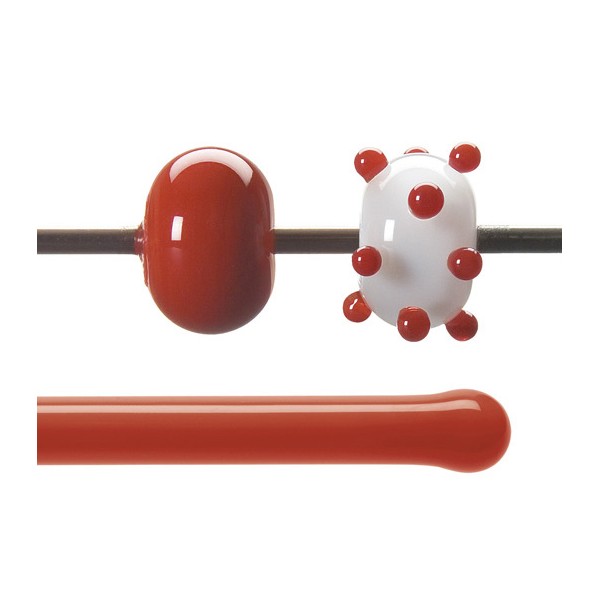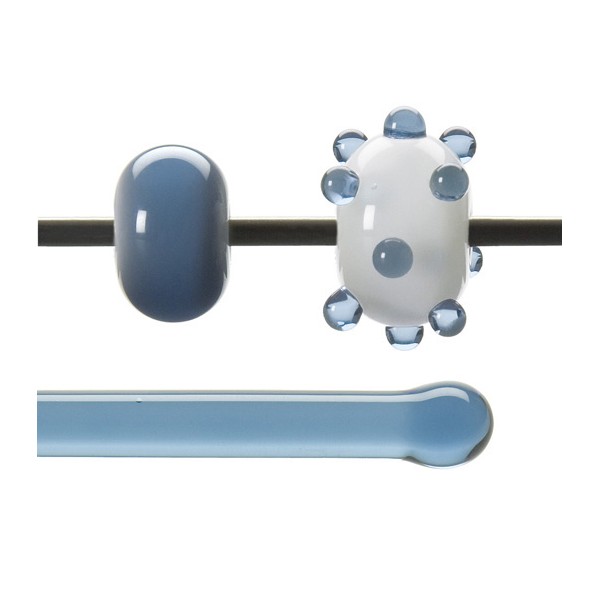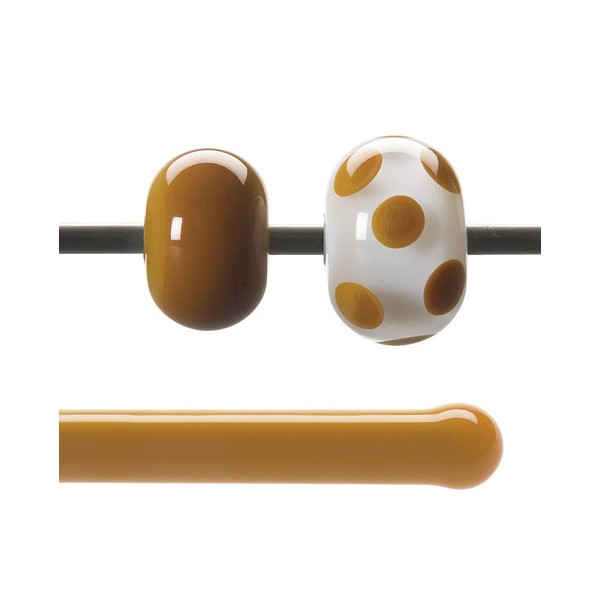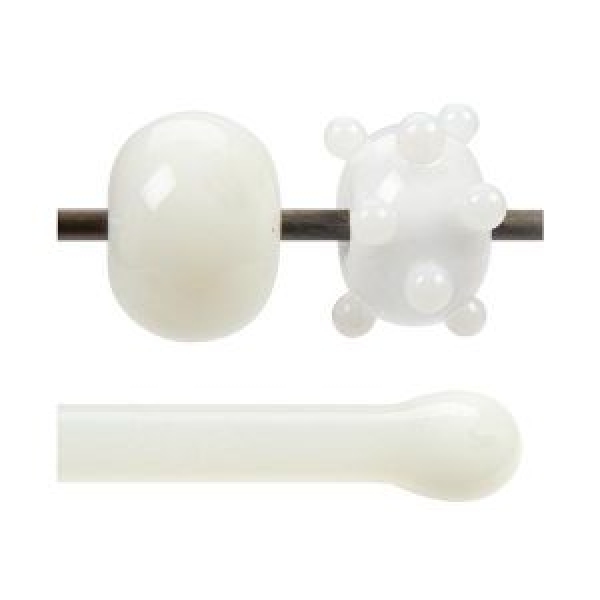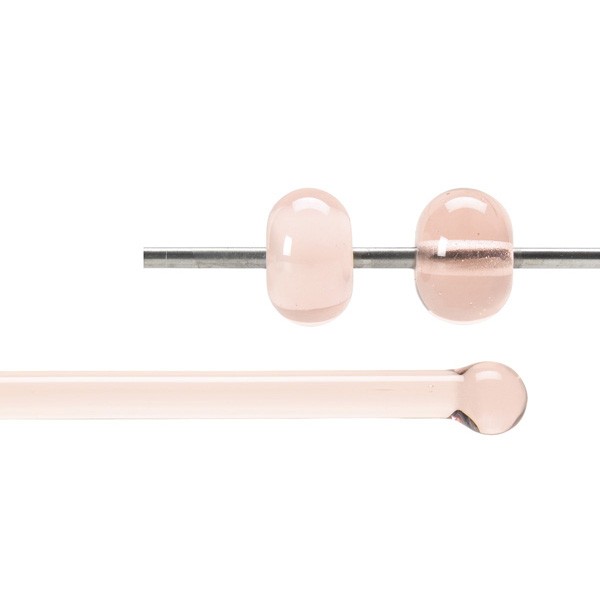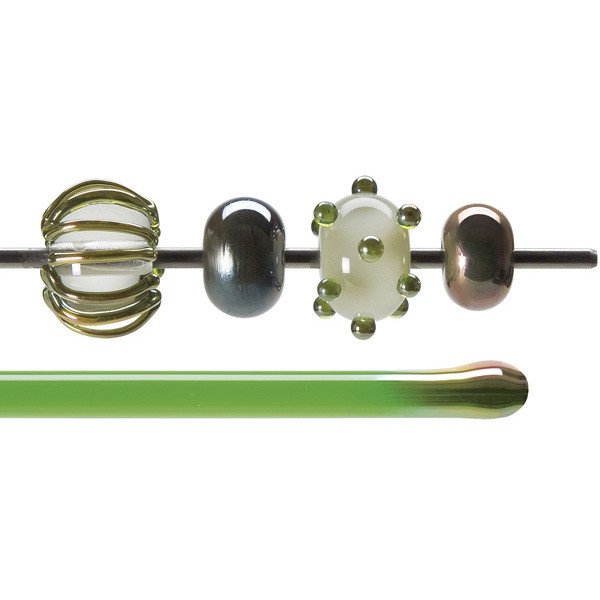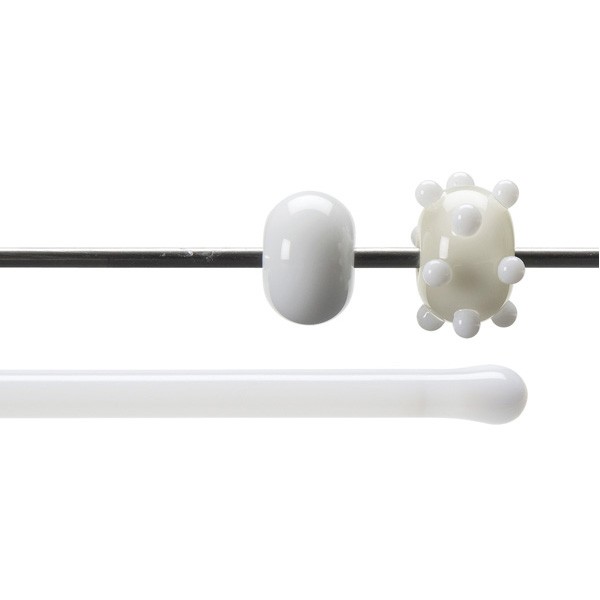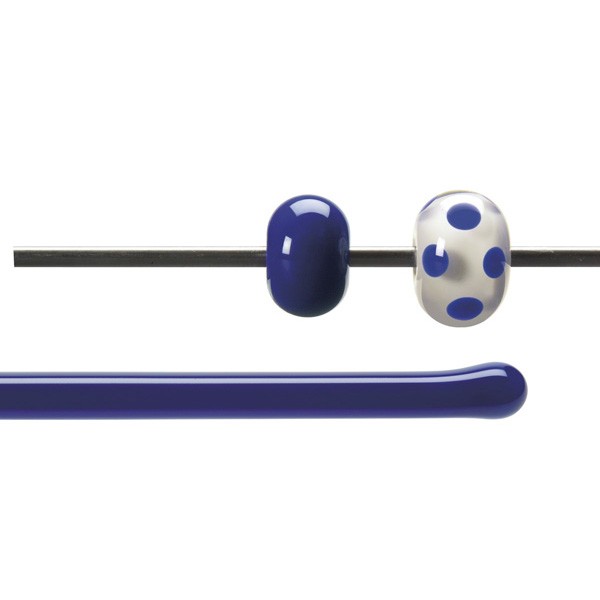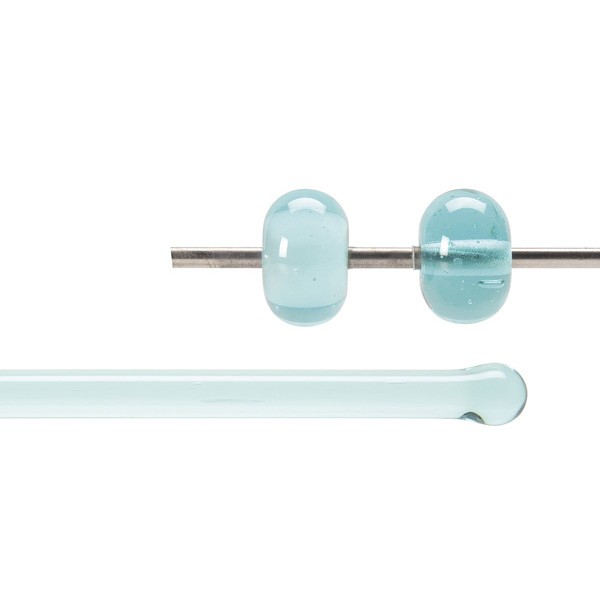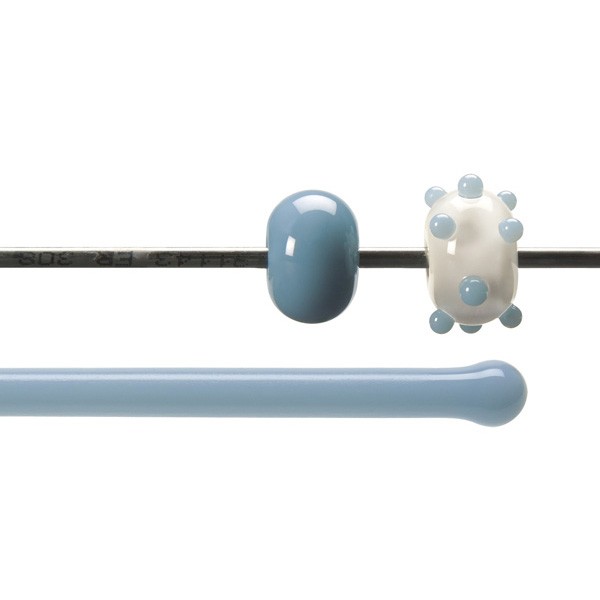Bullseye Rods - Blue Lustre - Transparent - 4-6mm
045.1714-76F
9501
"Striker" and recommended for torchwork only, please read description
"Striking glasses" change dramatically to reach target colour during firing. Colours may vary, depending on firing schedule, rate, atmosphere, and heat work.
| Contains: | Lead Silver |
|---|---|
| May react with: | Selenium Sulphur |
| Cold characteristics: | Dark transparent blue. |
| Torch: | A reducing glass that can develop a metallic sheen similar to polished hematite. Begin by working in a neutral flame. When ready to develop a metallic sheen, the glass should be relatively cool (no visible heat) and stable on the mandrel. Create a reduction atmosphere by turning the propane (fuel) up and watch for the surface of the glass to become metallic. Once this has happened, the piece should be put into an annealing kiln. This is a finishing step. If the metallic surface is reintroduced to a neutral flame, it will dissipate. It can be brought out again by returning it to a reduction atmosphere. When molten, this glass has a low viscosity, and can be quite soft, which may result in a blurred edge where it meets other glasses. In addition, the process of reducing the glass can cause a metallic sheen over areas of glass immediately adjacent to this style. |
| Kiln: | Not recommended for kiln forming. |
| Other: | 1714 is a relatively heavy glass, and there are 14 rods per pound (compared with 18-20 rods per pound for most other styles). Labelling is encouraged, because 1714 stays deceptively blue until reduced. Lustre rods are not part of the Bullseye Compatible line for kiln forming and are formulated solely for flameworking with Bullseye rods. We advise labelling all lustre glasses. |
9501 0.020000

